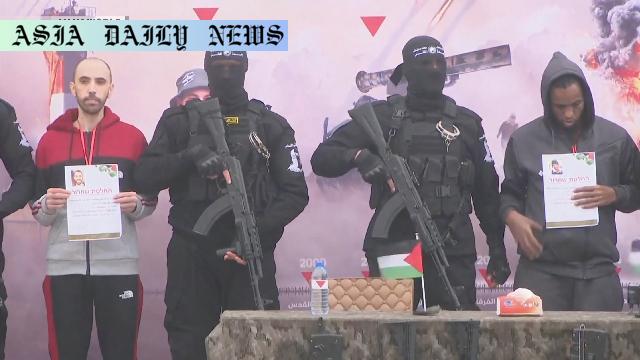Hostages: The Islamic group Hamas has released six more hostages under a ceasefire agreement in the Gaza Strip.
Hamas releases six more hostages as part of the ceasefire agreement.
The total number of hostages freed by Hamas now reaches 25.
Israel has released over 1,100 prisoners in response to the agreement.
Negotiations for the second phase of the peace deal face challenges.

Introduction: A Critical Moment in the Israel-Hamas Ceasefire
The Israel-Hamas ceasefire is at a pivotal moment following the release of six more hostages by Hamas in the Gaza Strip. This development is part of the ceasefire agreement that has been in effect since January 19. To date, 25 hostages held by Hamas have been freed under this deal, while Israel has responded by releasing over 1,100 prisoners. This incremental progress showcases a step towards fulfilling the terms of the agreement, yet complexities and setbacks persist.
The Current State of Hostage Exchanges
The six hostages released on Saturday mark another significant step in the ceasefire negotiations between Israel and Hamas. This follows the earlier release of hostages and the returns of remains, although discrepancies in identification led to tension. On Thursday, Hamas returned the remains of four hostages, but one body did not match the identity of the promised individual. Israel condemned this as a severe violation of the agreement, but Hamas quickly remedied the situation by providing the correct remains. As of now, the group’s commitment to returning additional bodies remains part of the ongoing negotiation terms.
Numbers and Responses: Progress and Challenges
The ceasefire deal has, thus far, resulted in 25 hostages being freed from Hamas’ custody. In response, Israel has released more than 1,100 prisoners, aligning with the agreement’s framework. These exchanges indicate efforts from both sides to uphold the deal. However, the overall pace and trust in negotiations remain fragile, with Israel expressing frustration at the mismatched remains and other logistical issues.
Six-Week Ceasefire: Progress So Far
The six-week ceasefire, initiated on January 19, provides a critical pause in long-standing hostilities between Israel and Hamas. This temporary cessation of violence comes with specific terms, including the exchange of hostages and prisoners. While the initial exchanges have been completed, the journey towards fulfilling the larger goals of the deal is fraught with challenges. Hamas is scheduled to hand over additional bodies of hostages next week, furthering the pursuit of an eventual total of 33 hostages being returned under the agreement’s terms.
Stalled Negotiations for the Second Phase
While the first phase of the ceasefire has seen progress, discussions for the subsequent stage are reportedly stalled. The second phase of the deal aims to bring about a permanent end to the fighting and the release of all remaining hostages. However, achieving such a milestone requires overcoming deep-seated mistrust and addressing unresolved issues. Negotiators from both sides will need to prioritize transparency and confidence-building measures to ensure further progress.
Conclusion: A Fragile Path Forward
The release of six additional hostages by Hamas highlights the potential for cooperation even amidst significant adversity. Both Israel and Hamas must navigate numerous challenges to uphold the ceasefire agreement and move towards a broader resolution of their conflict. The commitment to continuing exchanges and negotiations provides a glimmer of hope, but sustained effort from both parties will be essential in translating this temporary truce into a lasting peace.



Commentary
Reflecting on the Hostage Releases
The release of six more hostages by Hamas underlines how fragile and complicated ceasefire agreements can be when dealing with longstanding conflicts like the one between Israel and Hamas. On the surface, the return of hostages seems like undeniable progress. Yet, the logistical issues, such as mismatched identities, underscore just how delicate these exchanges are. It’s heartening to see moments of human compassion amidst such a deeply rooted political conflict, but they also remind us how much more remains to be done to build trust on both sides.
The Importance of Ceasefire Agreements
Ceasefire agreements are not just pauses in hostilities; they represent opportunities to lay the groundwork for long-term peace. The Israel-Hamas ceasefire of January 19 is a critical step in de-escalating tensions. However, the incremental progress so far also highlights the complexity of such agreements. Releasing hostages and prisoners is only the first step. If nothing else, this proves how deeply intertwined humanitarian, political, and logistical challenges are in conflict resolution.
A Path Towards Long-Term Resolution
The focus now must shift to ensuring that the second stage of the deal is successful. A permanent end to the fighting should take precedence in negotiations, as it is the ultimate goal of such agreements. For this to happen, both sides must dedicate themselves to transparent communication, honest negotiation, and most importantly, addressing the root causes of their conflict. Achieving this will not be easy, but small steps like the release of hostages can signify the beginning of a larger transformation.